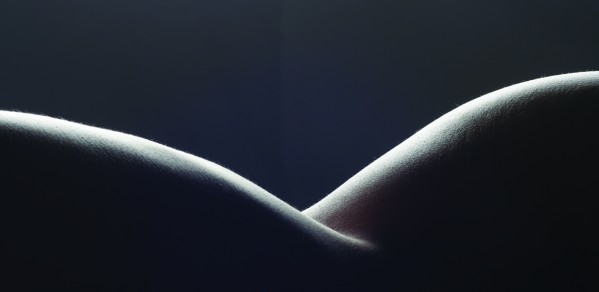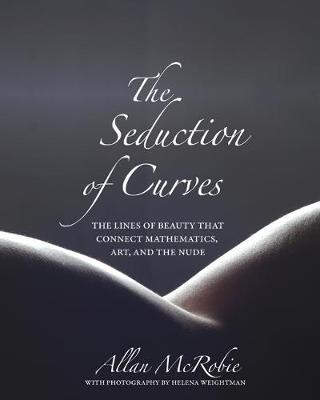
A lavishly illustrated book that explores the language of curves that spans the human body, science, engineering, and art.
This is a mathematics book, a science book, and an art book—a seductive and richly illustrated work of cultural synthesis, in which the visible and hidden folds and surfaces of our bodies are described by modern geometry and connected to engineering, optics, and other applications.
Michael Berry, University of Bristol
Curves are seductive. These smooth, organic lines and surfaces—like those of the human body—appeal to us in an instinctive, visceral way, in a way that straight lines, or the perfect shapes of classical geometry, never could. In this lavishly illustrated book, Allan McRobie takes the reader on a fascinating exploration of the beautiful curves that shape our world—from our bodies to Salvador Dalí’s paintings and even to the space-time fabric of the universe itself.
The book focuses on seven curves — the fold, the cusp, the swallowtail, and the butterfly, plus the hyperbolic, elliptical, and parabolic “umbilics”. It describes how the origins of their taxonomy can be traced back to mathematician René Thom's catastrophe theory. In an accessible discussion illustrated with photographs of the human nude, McRobie introduces these curves and then describes their role in nature, science, engineering, architecture, art, and other areas. The reader learns how these curves play out in everything from the stability of oil rigs to the study of distant galaxies to rainbows, from the patterns of light on pool floors, and even to the shape of human genitals. McRobie also discusses the role of these curves in the work of artists such as David Hockney, Henry Moore, and Anish Kapoor, with particular attention given to the delicate sculptures of Naum Gabo and the final paintings of Dalí, who said that Thom’s theory “bewitched all of my atoms.”
A unique introduction to the language of beautiful curves, this book may change the way you see the world.
Allan McRobie is a Reader in the Department of Engineering, University of Cambridge, where he teaches stability theory and structural engineering with specialist interests in dynamics and stability. It was during a life drawing class at the Department (classes that McRobie had introduced to broaden the horizons of the Engineering students), that he first recognised the strong unifying resonances that exist between his lecture notes on stability theory and the shapes in front of his eyes. He says, "Not only can life drawing help you to understand the more difficult mathematical aspects of stability theory but if you understand the maths of stability theory, it changes the way you see the life model – and the world around you. You start to notice shapes and features that you hadn’t previously noticed. It is a two-way process, with a genuine synergy between the maths and the model."
Before joining the University of Cambridge McRobie worked as an engineer in Australia, designing bridges and towers.
Reviews:
"I have never encountered anything quite like [The Seduction of Curves], which I view as genuinely sui generis. . . . The (excellent) prose descriptions are accompanied by lots of illustrations, both photographs and drawings, quite a few of which are in color. . . . An unusual and eclectic book, and one that taught me a lot of things that I did not know before."--Mark Hunacek, MAA Reviews

"This is what a book should be: startling, bold, and beautiful, idiosyncratic and yet universal. Only Allan McRobie could have written it. But all of us can enjoy it. He shows us how to look at ourselves, our bodies, and our world in a new way. After just a few minutes you'll feel like you're seeing everything for the first time. Brilliantly conceived, poetically written, and utterly original, The Seduction of Curves is a sinuous delight."--Steven Strogatz, author of The Joy of x: A Guided Tour of Math, from One to Infinity
"McRobie, a mathematician with a deep knowledge of the visual arts and the human body's curves, has written a startlingly original book. The Seduction of Curves is a probing exploration of the parallels between nature and the constructed world—and the most striking illustrated mathematics book I've ever seen."--Michael Harris, author of Mathematics without Apologies: Portrait of a Problematic Vocation
"This is a mathematics book, a science book, and an art book—a seductive and richly illustrated work of cultural synthesis, in which the visible and hidden folds and surfaces of our bodies are described by modern geometry and connected to engineering, optics, and other applications."--Michael Berry, University of Bristol
On 24th October, 18:30 – 20:00 join Allan McRobie at Heffers bookshop, Cambridge as he celebrates the launch of his new book, The Seduction of Curves: the Lines of Beauty That Connect Mathematics, Art, and the Nude.
The book will be available to purchase at the launch and Allan will be signing copies.
The event is free to attend but spaces are limited; please book a free ticket through this page to be guaranteed entry.
On 13 November 2017 at the Mathematical Institute, University of Oxford Allan will explain how the key to understanding the language of curves is René Thom’s Catastrophe Theory, and how – remarkably – the best place to learn that language is perhaps in the life drawing class. Sharing its title with his new book, the talk will wander gently across mathematics, physics, engineering, biology and art, but always with a focus on curves. Find out more here.


